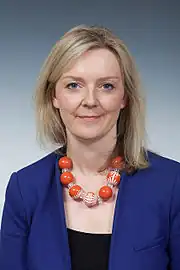South West Norfolk (UK Parliament constituency)
South West Norfolk is a constituency[n 1] represented in the House of Commons of the UK Parliament since 2010 by Liz Truss of the Conservative Party, who briefly served as Prime Minister of the United Kingdom from September to October 2022.[n 2]
| South West Norfolk | |
|---|---|
| County constituency for the House of Commons | |
 Boundary of South West Norfolk in Norfolk | |
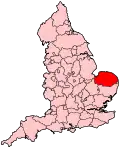 Location of Norfolk within England | |
| County | Norfolk |
| Electorate | 75,034 (December 2010)[1] |
| Major settlements | Downham Market, Swaffham and Thetford |
| Current constituency | |
| Created | 1885 |
| Member of Parliament | Liz Truss (Conservative) |
| Seats | One |
| Created from | South Norfolk and West Norfolk |
Constituency profile
This is a rural constituency which retains a significant agricultural and food-production sector.[2] The population is largely White and predominantly homeowners, with incomes and house prices slightly below the UK average.[3] Electoral Calculus describes this as a "Strong Right" seat characterised by socially conservative values and strong support for Brexit.
History
Under the Redistribution of Seats Act 1885, the three two-member county divisions of Norfolk were replaced with six single-member divisions, including the newly created South-Western Division of Norfolk, largely formed from southern parts of the abolished Western Division, including Thetford. From the 1950 general election onwards, it has been formally known as the county constituency of South West Norfolk.
South West Norfolk has been held solidly by Conservatives since 1964, but for twenty years prior; it had been ultra-marginal. Labour first held it briefly from 1929 to 1931, and Sidney Dye of the Labour Party gained it in 1945 with a narrow majority of 53 votes. Dye subsequently retained the seat at the 1950 general election with an increased, but nevertheless, small majority of 260 votes. He lost it to Denys Bullard of the Conservatives in 1951 by 442 votes and regained the seat from Bullard in 1955 with a small majority of 193 votes. Dye died at the end of 1958, and at the by-election, the Labour Party candidate Albert Hilton retained the seat with an increased majority of 1,354 votes. At the 1959 general election that soon followed, Hilton's safe majority was drastically reduced to a thin margin of 78 votes.[4]
Although Labour had held the seat at two general elections, despite two consecutive overall Conservative victories; the Conservatives won the seat at the 1964 general election, which was a Labour victory nationwide, and the party returned to government after 13 years in opposition. Paul Hawkins, then Gillian Shephard held the seat. Shephard's majority was slashed at the 1997 general election, in what would be the worst defeat nationwide for the Conservative Party in 91 years, before recovering at the 2001 general election. Both occasions resulted in an overall Labour victory.[4]
Shephard decided not to run again in 2005 and was elevated to a peerage. The Conservative Party selected Christopher Fraser, former MP for Mid Dorset and Poole North and he was elected with a comfortable majority of over 10,000 votes.
On 28 May 2009, Fraser announced that he would be standing down at the 2010 general election citing family reasons.[5] This was after his expenses claims were highlighted in The Daily Telegraph; according to the newspaper, Fraser claimed £1,800 in public money for buying 215 trees and marking out the boundary of his second home in the constituency.[6]
Liz Truss was elected to succeed Fraser at the 2010 general election, which saw the Conservatives return to government after 13 years in opposition; however, the party went into a coalition with the Liberal Democrats. Truss served as a Cabinet minister under various Conservative prime ministers since 2014, serving as Environment Secretary between 2014 and 2016 under the leadership of David Cameron, Secretary of State for Justice and Lord Chancellor between 2016 and 2017 under the leadership of Theresa May, and Secretary of State for International Trade and President of the Board of Trade between 2019 and 2021 under the leadership of Boris Johnson; before she was promoted to serve as Foreign Secretary in 2021. In 2022, Truss won the 2022 Conservative leadership election that followed Boris Johnson's decision to stand down as UK Prime Minister and Leader of the Conservative Party, and was subsequently appointed Prime Minister by Queen Elizabeth II on 6 September. Truss resigned as Prime Minister of the United Kingdom on 25 October 2022.[7]
Boundaries and boundary changes
1885–1918
- The part of the Municipal Borough of Thetford in the county of Norfolk; and
- The Sessional Divisions of Clackclose, Grimshoe, South Greenhoe, and Wayland.[8]
Formed from southern parts of the abolished Western Division of Norfolk.
1918–1950
- The Municipal Borough of Thetford;
- The Urban Districts of Downham Market, East Dereham, and Swaffham;
- The Rural Districts of Mitford and Launditch, and Swaffham; and
- Parts of the Rural Districts of Downham, Marshland, and Thetford.[9]
Gained northern areas of the abolished Mid Division of Norfolk, including East Dereham, and a small area in the south of the Northern Division. Transferred a small area in the east to the Southern Division.
1950–1983
- The Urban Districts of Downham Market, East Dereham, and Swaffham; and
- The Rural Districts of Downham, Mitford and Launditch, and Swaffham.[9]
Thetford transferred to South Norfolk. Minor changes to boundary with King's Lynn to align with boundaries of local authorities.
1983–2010
- The District of Breckland wards of All Saints, Besthorpe, Buckenham, Conifer, East Guiltcross, Haggard De Toni, Harling, Haverscroft, Heathlands, Mid Forest, Nar Valley, Necton, Peddars Way, Queen's, Swaffham, Templar, Thetford Abbey, Thetford Barnham Cross, Thetford Guildhall, Thetford Saxon, Watton, Wayland, Weeting, West Guiltcross, and Wissey; and
- The Borough of King's Lynn and West Norfolk wards of Airfield, Denton, Denver, Downham Market, Emneth, Ten Mile, Upwell Outwell and Delph, Watlington, and Wissey.[10][11]
Thetford transferred back from South Norfolk, together with areas comprising the former Rural District of Wayland, including Attleborough. North-eastern areas, including East Dereham, transferred to the re-established constituency of Mid Norfolk. Minor re-alignment of boundary with North West Norfolk.
2010–present
- The District of Breckland wards of Conifer, East Guiltcross, Harling and Heathlands, Mid Forest, Nar Valley, Swaffham, Thetford Abbey, Thetford Castle, Thetford Guildhall, Thetford Saxon, Wayland, Weeting, and West Guiltcross; and
- The Borough of King's Lynn and West Norfolk wards of Airfield, Denton, Downham Old Town, East Downham, Emneth with Outwell, Hilgay with Denver, Mershe Lande, North Downham, St Lawrence, South Downham, Upwell and Delph, Walton, Watlington, Wiggenhall, and Wimbotsham with Fincham Wissey.[12]
As a result of the Boundary Commission's report which came into effect for the 2010 general election, South West Norfolk gained wards from neighbouring North West Norfolk including Walpole, Tilney St Lawrence, and Wiggenhall villages. It lost to Mid Norfolk the wards of All Saints, Buckenham, Burgh and Haverscroft, Haggard De Toni, Necton, Queen's, Templar and Watton, which included the villages of Necton, Great Ellingham and Watton.
The constituency includes Downham Market, Swaffham, Thetford, Outwell, Upwell, and Feltwell.
Members of Parliament
Elections
Elections in the 2010s
| Party | Candidate | Votes | % | ±% | |
|---|---|---|---|---|---|
| Conservative | Liz Truss | 35,507 | 69.0 | +6.2 | |
| Labour | Emily Blake | 9,312 | 18.1 | −9.7 | |
| Liberal Democrats | Josie Ratcliffe | 4,166 | 8.1 | +3.6 | |
| Green | Pallavi Devulapalli | 1,645 | 3.2 | New | |
| Monster Raving Loony | Earl Elvis of Outwell | 836 | 1.6 | New | |
| Majority | 26,195 | 50.9 | +15.9 | ||
| Turnout | 51,466 | 65.6 | −1.7 | ||
| Conservative hold | Swing | +8.0 | |||
| Party | Candidate | Votes | % | ±% | |
|---|---|---|---|---|---|
| Conservative | Liz Truss[16] | 32,894 | 62.8 | +11.9 | |
| Labour | Peter Smith[16] | 14,582 | 27.8 | +10.5 | |
| UKIP | David Williams | 2,575 | 4.9 | −18.4 | |
| Liberal Democrats | Stephen Gordon | 2,365 | 4.5 | +0.1 | |
| Majority | 18,312 | 35.0 | +7.4 | ||
| Turnout | 52,416 | 67.3 | +2.2 | ||
| Conservative hold | Swing | +0.7 | |||
| Party | Candidate | Votes | % | ±% | |
|---|---|---|---|---|---|
| Conservative | Liz Truss[16] | 25,515 | 50.9 | +2.6 | |
| UKIP | Paul Smyth[17] | 11,654 | 23.3 | +17.1 | |
| Labour | Peter Smith[16] | 8,649 | 17.3 | −1.3 | |
| Liberal Democrats | Rupert Moss-Eccardt[18] | 2,217 | 4.4 | −17.2 | |
| Green | Sandra Walmsley[19] | 2,075 | 4.1 | +2.4 | |
| Majority | 13,861 | 27.6 | +0.9 | ||
| Turnout | 50,110 | 65.1 | −1.1 | ||
| Conservative hold | Swing | -7.2 | |||
| Party | Candidate | Votes | % | ±% | |
|---|---|---|---|---|---|
| Conservative | Liz Truss | 23,753 | 48.3 | +3.4 | |
| Liberal Democrats | Stephen Gordon | 10,613 | 21.6 | +2.4 | |
| Labour | Peter Smith | 9,119 | 18.6 | −11.4 | |
| UKIP | Kay Hipsey[21] | 3,061 | 6.2 | +1.5 | |
| BNP | Dennis Pearce[22] | 1,774 | 3.6 | New | |
| Green | Lori Allen | 830 | 1.7 | New | |
| Majority | 13,140 | 26.7 | +8.5 | ||
| Turnout | 49,150 | 66.2 | +4.1 | ||
| Conservative hold | Swing | ||||
Having been reformed for the 2010 election, the changes in percentage figures are based on results if the current constituency had been fought in the 2005 election.
Elections in the 2000s
| Party | Candidate | Votes | % | ±% | |
|---|---|---|---|---|---|
| Conservative | Christopher Fraser | 25,881 | 46.9 | −5.3 | |
| Labour | Charmaine Morgan | 15,795 | 28.7 | −5.8 | |
| Liberal Democrats | April Pond | 10,207 | 18.5 | +7.8 | |
| UKIP | Delia Hall | 2,738 | 5.0 | +2.4 | |
| Independent | Kim Hayes | 506 | 0.9 | New | |
| Majority | 10,086 | 18.2 | +0.5 | ||
| Turnout | 55,127 | 62.5 | −0.6 | ||
| Conservative hold | Swing | +0.3 | |||
| Party | Candidate | Votes | % | ±% | |
|---|---|---|---|---|---|
| Conservative | Gillian Shephard | 27,633 | 52.2 | +10.2 | |
| Labour | Anne Hanson | 18,267 | 34.5 | −3.3 | |
| Liberal Democrats | Gordon Dean | 5,681 | 10.7 | −3.2 | |
| UKIP | Ian Smith | 1,368 | 2.6 | New | |
| Majority | 9,366 | 17.7 | +13.5 | ||
| Turnout | 52,949 | 63.1 | −10.0 | ||
| Conservative hold | Swing | +6.7 | |||
Elections in the 1990s
| Party | Candidate | Votes | % | ±% | |
|---|---|---|---|---|---|
| Conservative | Gillian Shephard | 24,694 | 42.0 | −12.6 | |
| Labour | Adrian Hefferman | 22,230 | 37.8 | +10.7 | |
| Liberal Democrats | David J. Bucton | 8,178 | 13.9 | −6.3 | |
| Referendum | Ronnie J.B. Hoare | 3,694 | 6.3 | N/A | |
| Majority | 2,464 | 4.2 | −23.3 | ||
| Turnout | 58,796 | 73.1 | −6.2 | ||
| Conservative hold | Swing | −11.6 | |||
| Party | Candidate | Votes | % | ±% | |
|---|---|---|---|---|---|
| Conservative | Gillian Shephard | 33,637 | 54.6 | −3.0 | |
| Labour | Mary Page | 16,706 | 27.1 | +6.1 | |
| Liberal Democrats | John T. Marsh | 11,237 | 18.2 | −3.2 | |
| Majority | 16,931 | 27.5 | −8.7 | ||
| Turnout | 61,580 | 79.3 | +3.3 | ||
| Conservative hold | Swing | −4.6 | |||
Elections in the 1980s
| Party | Candidate | Votes | % | ±% | |
|---|---|---|---|---|---|
| Conservative | Gillian Shephard | 32,519 | 57.6 | +1.9 | |
| Liberal | Malcolm Scott | 12,083 | 21.4 | −5.3 | |
| Labour | Mary Page | 11,844 | 21.0 | +3.4 | |
| Majority | 20,436 | 36.2 | +7.2 | ||
| Turnout | 56,446 | 76.0 | +2.9 | ||
| Conservative hold | Swing | ||||
| Party | Candidate | Votes | % | ±% | |
|---|---|---|---|---|---|
| Conservative | Paul Hawkins | 28,632 | 55.7 | +0.9 | |
| Liberal | E.B.S. Baxter | 13,722 | 26.7 | +12.6 | |
| Labour | A.L. Rosenberg | 9,072 | 17.6 | -13.5 | |
| Majority | 14,910 | 29.0 | +5.3 | ||
| Turnout | 51,426 | 73.1 | -5.0 | ||
| Conservative hold | Swing | ||||
Elections in the 1970s
| Party | Candidate | Votes | % | ±% | |
|---|---|---|---|---|---|
| Conservative | Paul Hawkins | 24,767 | 54.80 | ||
| Labour | AL Rosenberg | 14,063 | 31.12 | ||
| Liberal | B Baxter | 6,363 | 14.08 | ||
| Majority | 10,704 | 23.68 | |||
| Turnout | 45,193 | 78.05 | |||
| Conservative hold | Swing | ||||
| Party | Candidate | Votes | % | ±% | |
|---|---|---|---|---|---|
| Conservative | Paul Hawkins | 19,778 | 47.90 | ||
| Labour | H Toch | 14,850 | 35.97 | ||
| Liberal | B Baxter | 6,658 | 16.13 | ||
| Majority | 4,928 | 11.93 | |||
| Turnout | 41,286 | 76.86 | |||
| Conservative hold | Swing | ||||
| Party | Candidate | Votes | % | ±% | |
|---|---|---|---|---|---|
| Conservative | Paul Hawkins | 20,430 | 46.24 | ||
| Labour | H Toch | 14,387 | 32.56 | ||
| Liberal | KW Nash | 8,986 | 20.34 | ||
| Independent Powellite | MM McNee | 380 | 0.86 | New | |
| Majority | 6,043 | 13.68 | |||
| Turnout | 44,183 | 82.94 | |||
| Conservative hold | Swing | ||||
| Party | Candidate | Votes | % | ±% | |
|---|---|---|---|---|---|
| Conservative | Paul Hawkins | 22,220 | 57.28 | ||
| Labour | Leslie J Potter | 16,572 | 42.72 | ||
| Majority | 5,648 | 14.56 | |||
| Turnout | 38,792 | 80.46 | |||
| Conservative hold | Swing | ||||
Elections in the 1960s
| Party | Candidate | Votes | % | ±% | |
|---|---|---|---|---|---|
| Conservative | Paul Hawkins | 17,880 | 51.11 | ||
| Labour | Noel James Insley | 17,105 | 48.89 | ||
| Majority | 775 | 2.22 | |||
| Turnout | 34,985 | 84.00 | |||
| Conservative hold | Swing | ||||
| Party | Candidate | Votes | % | ±% | |
|---|---|---|---|---|---|
| Conservative | Paul Hawkins | 16,728 | 49.55 | ||
| Labour | Albert Hilton | 16,605 | 49.19 | ||
| Independent | Victor Welch | 427 | 1.26 | New | |
| Majority | 123 | 0.36 | N/A | ||
| Turnout | 33,760 | 81.96 | |||
| Conservative gain from Labour | Swing | ||||
Elections in the 1950s
| Party | Candidate | Votes | % | ±% | |
|---|---|---|---|---|---|
| Labour | Albert Hilton | 16,858 | 50.12 | ||
| Conservative | Elaine Kellett | 16,780 | 49.88 | ||
| Majority | 78 | 0.24 | |||
| Turnout | 83.5 | ||||
| Labour hold | Swing | ||||
| Party | Candidate | Votes | % | ±% | |
|---|---|---|---|---|---|
| Labour | Albert Hilton | 15,314 | 50.95 | +0.66 | |
| Conservative | Elaine Kellett | 13,960 | 46.44 | -3.27 | |
| Independent Nationalist | Andrew Fountaine | 785 | 2.61 | N/A | |
| Majority | 1,354 | 4.51 | +3.93 | ||
| Turnout | 30,059 | ||||
| Labour hold | Swing | ||||
| Party | Candidate | Votes | % | ±% | |
|---|---|---|---|---|---|
| Labour | Sidney Dye | 16,781 | 50.29 | ||
| Conservative | Denys Bullard | 16,588 | 49.71 | ||
| Majority | 193 | 0.58 | |||
| Turnout | 82.60 | ||||
| Labour gain from Conservative | Swing | ||||
| Party | Candidate | Votes | % | ±% | |
|---|---|---|---|---|---|
| Conservative | Denys Bullard | 16,970 | 50.66 | ||
| Labour | Sidney Dye | 16,528 | 49.34 | ||
| Majority | 442 | 1.32 | |||
| Turnout | 82.61 | ||||
| Conservative gain from Labour | Swing | ||||
| Party | Candidate | Votes | % | ±% | |
|---|---|---|---|---|---|
| Labour | Sidney Dye | 15,649 | 47.35 | ||
| Conservative | Denys Bullard | 15,389 | 46.57 | ||
| Liberal | George Stephen Dennis | 2,009 | 6.08 | ||
| Majority | 260 | 0.79 | |||
| Turnout | 83.41 | ||||
| Labour hold | Swing | ||||
Election in the 1940s
| Party | Candidate | Votes | % | ±% | |
|---|---|---|---|---|---|
| Labour | Sidney Dye | 15,091 | 50.09 | ||
| Conservative | Somerset de Chair | 15,038 | 49.91 | ||
| Majority | 53 | 0.18 | N/A | ||
| Turnout | 30,129 | 65.92 | |||
| Labour gain from Conservative | Swing | ||||
Elections in the 1930s
| Party | Candidate | Votes | % | ±% | |
|---|---|---|---|---|---|
| Conservative | Somerset de Chair | 16,060 | 57.35 | ||
| Labour | Sidney Dye | 11,943 | 42.65 | ||
| Majority | 4,117 | 14.70 | |||
| Turnout | 28,003 | 69.50 | |||
| Conservative hold | Swing | ||||
| Party | Candidate | Votes | % | ±% | |
|---|---|---|---|---|---|
| Conservative | Alan McLean | 19,614 | 66.34 | ||
| Labour | William Taylor | 9,952 | 33.66 | ||
| Majority | 9,662 | 32.68 | N/A | ||
| Turnout | 29,566 | 74.54 | |||
| Conservative gain from Labour | Swing | ||||
Elections in the 1920s
| Party | Candidate | Votes | % | ±% | |
|---|---|---|---|---|---|
| Labour | William Taylor | 12,152 | 41.8 | −0.2 | |
| Unionist | Alan McLean | 11,382 | 39.1 | −18.9 | |
| Liberal | Victor Diederichs Duval | 5,556 | 19.1 | New | |
| Majority | 770 | 2.7 | N/A | ||
| Turnout | 29,090 | 74.1 | +2.1 | ||
| Registered electors | 39,277 | ||||
| Labour gain from Unionist | Swing | +9.4 | |||
| Party | Candidate | Votes | % | ±% | |
|---|---|---|---|---|---|
| Unionist | Alan McLean | 13,838 | 58.0 | +4.5 | |
| Labour | William Taylor | 10,004 | 42.0 | −4.5 | |
| Majority | 3,834 | 16.0 | +9.0 | ||
| Turnout | 23,842 | 72.0 | +7.3 | ||
| Registered electors | 33,131 | ||||
| Unionist hold | Swing | +4.5 | |||
| Party | Candidate | Votes | % | ±% | |
|---|---|---|---|---|---|
| Unionist | Alan McLean | 11,269 | 53.5 | New | |
| Labour | William Taylor | 9,779 | 46.5 | +1.2 | |
| Majority | 1,490 | 7.0 | N/A | ||
| Turnout | 21,048 | 64.7 | +5.6 | ||
| Registered electors | 32,543 | ||||
| Unionist gain from National Liberal | Swing | N/A | |||
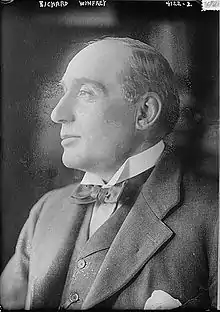
| Party | Candidate | Votes | % | ±% | |
|---|---|---|---|---|---|
| National Liberal | Richard Winfrey | 10,432 | 54.7 | N/A | |
| Labour | William Taylor | 8,655 | 45.3 | New | |
| Majority | 1,777 | 9.4 | N/A | ||
| Turnout | 19,087 | 59.1 | N/A | ||
| Registered electors | 32,305 | ||||
| National Liberal hold | Swing | N/A | |||
Elections in the 1910s
| Party | Candidate | Votes | % | ±% | |
|---|---|---|---|---|---|
| C | Liberal | Richard Winfrey | Unopposed | ||
| Liberal hold | |||||
| C indicates candidate endorsed by the coalition government. | |||||
| Party | Candidate | Votes | % | ±% | |
|---|---|---|---|---|---|
| Liberal | Richard Winfrey | 4,176 | 52.7 | +1.2 | |
| Conservative | Albert Edward Stanley Clarke | 3,745 | 47.3 | -1.2 | |
| Majority | 431 | 5.4 | +2.4 | ||
| Turnout | 7,921 | 87.6 | -3.5 | ||
| Liberal hold | Swing | +1.2 | |||
| Party | Candidate | Votes | % | ±% | |
|---|---|---|---|---|---|
| Liberal | Richard Winfrey | 4,239 | 51.5 | -4.2 | |
| Conservative | Thomas Hare | 4,000 | 48.5 | +4.2 | |
| Majority | 239 | 3.0 | -8.4 | ||
| Turnout | 8,239 | 91.1 | +2.4 | ||
| Liberal hold | Swing | -4.2 | |||
Elections in the 1900s
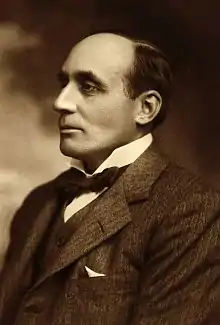
| Party | Candidate | Votes | % | ±% | |
|---|---|---|---|---|---|
| Liberal | Richard Winfrey | 4,416 | 55.7 | +6.1 | |
| Conservative | Thomas Hare | 3,513 | 44.3 | -6.1 | |
| Majority | 903 | 10.4 | N/A | ||
| Turnout | 7,929 | 88.7 | +4.7 | ||
| Registered electors | 8,936 | ||||
| Liberal gain from Conservative | Swing | +6.1 | |||
| Party | Candidate | Votes | % | ±% | |
|---|---|---|---|---|---|
| Conservative | Thomas Hare | 3,702 | 50.4 | -0.9 | |
| Liberal | Richard Winfrey | 3,636 | 49.6 | +0.9 | |
| Majority | 66 | 0.8 | -1.8 | ||
| Turnout | 7,338 | 84.0 | -0.8 | ||
| Registered electors | 8,740 | ||||
| Conservative hold | Swing | -0.9 | |||
Elections in the 1890s
| Party | Candidate | Votes | % | ±% | |
|---|---|---|---|---|---|
| Conservative | Thomas Hare | 3,968 | 51.3 | −0.9 | |
| Liberal | Richard Winfrey | 3,762 | 48.7 | +0.9 | |
| Majority | 206 | 2.6 | −1.8 | ||
| Turnout | 7,730 | 84.8 | −7.2 | ||
| Registered electors | 9,119 | ||||
| Conservative hold | Swing | −0.9 | |||
| Party | Candidate | Votes | % | ±% | |
|---|---|---|---|---|---|
| Conservative | Thomas Hare | 4,077 | 52.2 | N/A | |
| Liberal | Henry Lee-Warner | 3,739 | 47.8 | New | |
| Majority | 338 | 4.4 | N/A | ||
| Turnout | 7,816 | 92.0 | N/A | ||
| Registered electors | 8,499 | ||||
| Conservative hold | Swing | N/A | |||
Elections in the 1880s
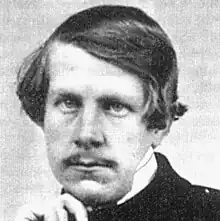
| Party | Candidate | Votes | % | ±% | |
|---|---|---|---|---|---|
| Conservative | William Tyssen-Amherst | Unopposed | |||
| Conservative hold | |||||
| Party | Candidate | Votes | % | ±% | |
|---|---|---|---|---|---|
| Conservative | William Tyssen-Amherst | 4,096 | 52.0 | ||
| Liberal | William Gurdon | 3,776 | 48.0 | ||
| Majority | 320 | 4.0 | |||
| Turnout | 7,872 | 83.8 | |||
| Registered electors | 9,391 | ||||
| Conservative win (new seat) | |||||
Notes
- A county constituency (for the purposes of election expenses and type of returning officer)
- As with all constituencies, the constituency elects one Member of Parliament (MP) by the first past the post system of election at least every five years.
References
- "Electorate Figures – Boundary Commission for England". 2011 Electorate Figures. Boundary Commission for England. 4 March 2011. Archived from the original on 6 November 2010. Retrieved 13 March 2011.
- UK Polling Report 2015 https://ukpollingreport.co.uk/2015guide/norfolksouthwest/
- Electoral Calculus https://www.electoralcalculus.co.uk/fcgi-bin/seatdetails.py?seat=Norfolk+South+West
- "Political Science Resources: links to UK and US politics". www.psr.keele.ac.uk.
- "BBC NEWS – UK – UK Politics – MP Fraser poised to leave Commons". news.bbc.co.uk. 28 May 2009.
- Swaine, By Jon. "MPs' expenses: Christopher Fraser says that claim for trees was necessary".
- Morris, Sophie. "A goodbye speech and a meeting with the King: Here's what's happening today - and when". Sky News. Retrieved 25 October 2022.
- Great Britain, Incorporated Council of Law Reporting for England and Wales. The public general acts. unknown library. Proprietors of the Law Journal Reports, 1884.
- S., Craig, Fred W. (1972). Boundaries of parliamentary constituencies 1885–1972;. Chichester: Political Reference Publications. ISBN 0900178094. OCLC 539011.
{{cite book}}: CS1 maint: multiple names: authors list (link) - "The Parliamentary Constituencies (England) Order 1983". www.legislation.gov.uk. Retrieved 13 March 2019.
- "The Parliamentary Constituencies (England) Order 1995". www.legislation.gov.uk. Retrieved 13 March 2019.
- "The Parliamentary Constituencies (England) Order 2007". www.legislation.gov.uk. Retrieved 13 March 2019.
- Leigh Rayment's Historical List of MPs – Constituencies beginning with "N" (part 2)
- "Norfolk South West Parliamentary constituency". BBC News. BBC. Retrieved 19 November 2019.
- "Election Data 2015". Electoral Calculus. Archived from the original on 17 October 2015. Retrieved 17 October 2015.
- "Norfolk South West 2015". electionresults.blogspot.co.uk.
- "UKIP South West Norfolk – Thetford Swaffham Downham Market". UKIP South West Norfolk – Thetford Swaffham Downham Market.
- "General Election 2015 Candidates - Liberal Democrats". Archived from the original on 13 April 2014.
- "Candidates". YourNextMP. Retrieved 1 March 2015.
- "Election Data 2010". Electoral Calculus. Archived from the original on 26 July 2013. Retrieved 17 October 2015.
- "UK Independence Party »". Archived from the original on 28 July 2011.
- "The British National Party — Blog — Tory Councillors Narrowly Defeated in Attempt to Approve King's Lynn Mosque after BNP Objections Dominate Hearing". Archived from the original on 14 April 2010. Retrieved 11 March 2010.
- "Election Data 2005". Electoral Calculus. Archived from the original on 15 October 2011. Retrieved 18 October 2015.
- "Election Data 2001". Electoral Calculus. Archived from the original on 15 October 2011. Retrieved 18 October 2015.
- "Election Data 1997". Electoral Calculus. Archived from the original on 15 October 2011. Retrieved 18 October 2015.
- "Election Data 1992". Electoral Calculus. Archived from the original on 15 October 2011. Retrieved 18 October 2015.
- "UK General Election results April 1992". Richard Kimber's Political Science Resources. Politics Resources. 9 April 1992. Retrieved 6 December 2010.
- "Election Data 1987". Electoral Calculus. Archived from the original on 15 October 2011. Retrieved 18 October 2015.
- "Election Data 1983". Electoral Calculus. Archived from the original on 15 October 2011. Retrieved 18 October 2015.
- Craig, F. W. S. (1983). British parliamentary election results 1918–1949 (3 ed.). Chichester: Parliamentary Research Services. ISBN 0-900178-06-X.
- British parliamentary election results, 1885–1918 (Craig)
- The Liberal Year Book, 1907
- Debrett's House of Commons & Judicial Bench, 1886
